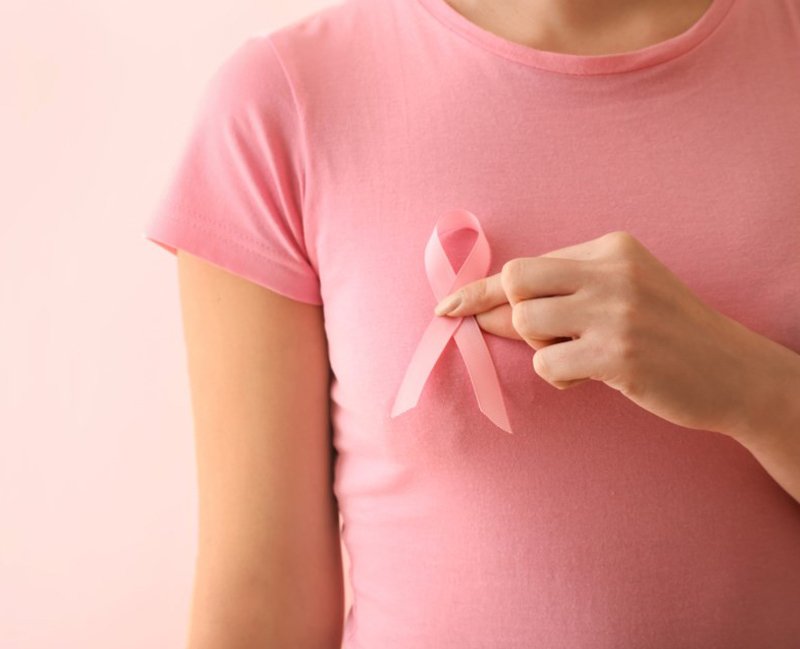
What we’re about to say may scandalise you to the core, but since it’s Breast Cancer Awareness Month we’re just going to go for it: It’s time to get naked and feel yourself up!
Well, at least the top half. Being familiar with your own body and noticing every tiny change in it is KEY when it comes to taking control of your health, especially when it’s about your breasts, otherwise known as your tatas, or boobies or whatever you call them pyar se (with love).
Statistically 1 in every 8 women will develop breast cancer in their lifetime but the earlier it is caught the more easily it is treated and the better the prognosis. So although a discovery of one of the symptoms we’ve listed below may be scary, the sooner it scares you and you get it checked, the better.
12 Key Symptoms of Breast Cancer
1. Thick Area
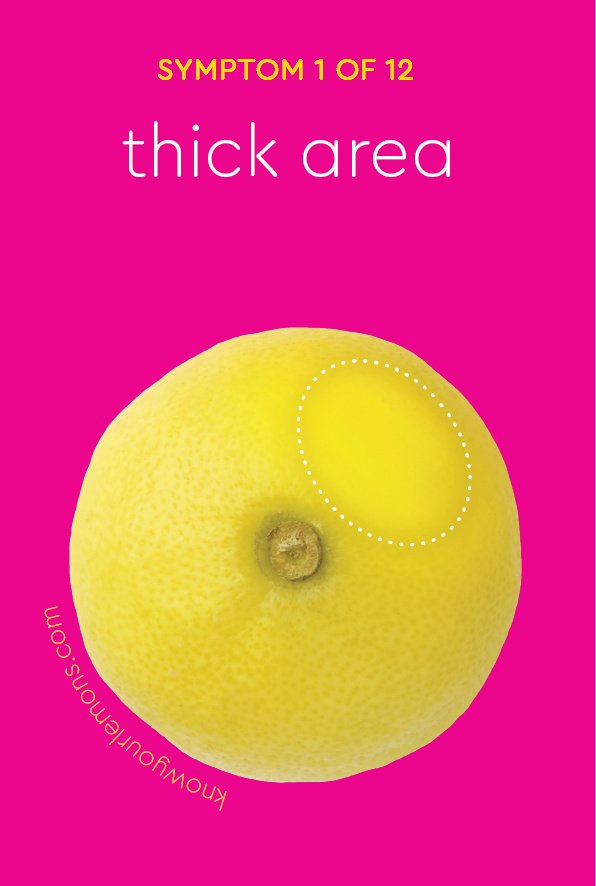
You may notice that a part of your breast feels different from the rest, being less “squishy” and more “dense”. This can be a normal part of menstruation or breastfeeding. However, a thickening in your breast that doesn’t go away or gets bigger could also be a sign of breast cancer.
The thickening can be in the skin (which is a sign of Inflammatory Breast Cancer) or deeper in the breast. This thickening is caused when cancer cells are blocking circulation in the breast (via blood or lymph vessels) or a tumor is growing near the surface of the skin. This is different from a hard lump, which is caused by cancer cells that grow very close together.
2. Dimple
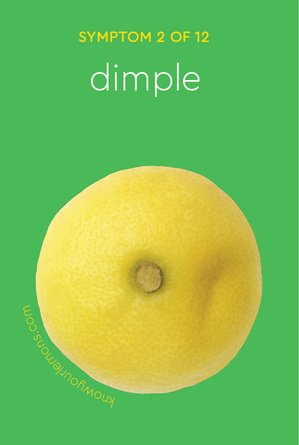
A dimple or indentation in the breast can happen when tight clothing leaves a temporary indent. But if a dimple in the breast doesn’t go away, it can also be a sign of breast cancer. It is caused when a tumor (lump) deep in the breast pulls the skin inward causing it to indent (it is not caused by an underwire bra!). Sometimes this lump can be felt, sometimes it can’t.
A dimple can be more easily seen when lifting your arms up above your head to see if the whole breast skin moves with you as you raise and lower your arms. (Pro tip: Having a light source directly overhead can also help cast shadows to show indents more clearly too.)
3. Nipple Crust

Crust on the nipple can be a harmless skin condition or it could be a sign of breast cancer called “Paget’s disease.” This is when cancer cells spread inside the breast and live in the nipple, creating a scab-like red or white crusted surface that can be sore and doesn’t go away.
4. Red or Hot
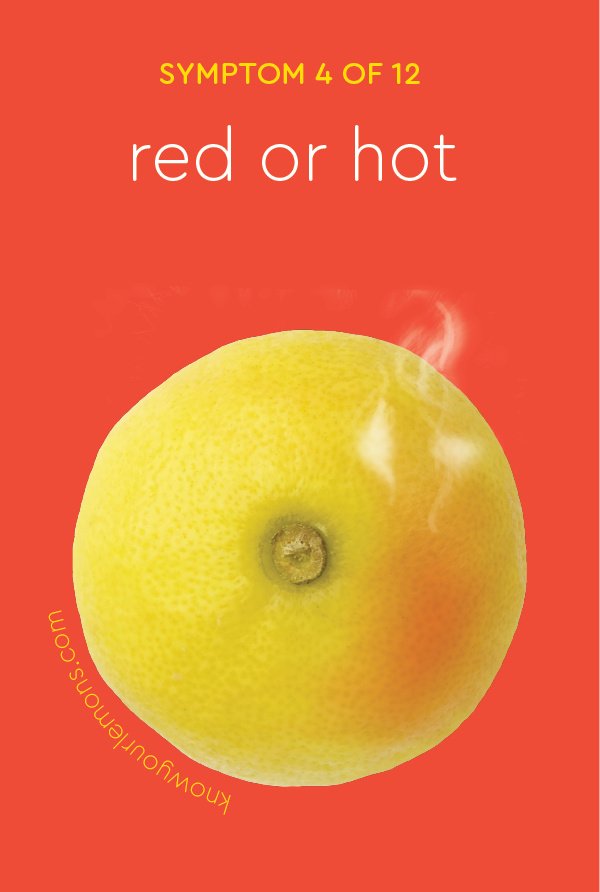
Typically this is an infection or a skin symptom common to developing breasts, breastfeeding or eczema. However, if time, antibiotics or other treatments don’t improve the symptom, it could be a sign of Inflammatory Breast Cancer. This type of cancer blocks the flow of lymph in the breast, which causes swelling and redness, but without an obvious hard lump. This may also make the breast feel warm or hot or cause a burning sensation.
5. Unexpected Fluid

Discharge from the nipple is common and is mostly harmless (benign). It’s usually related to developing breasts, infection, cysts, pregnancy or breastfeeding. However, if fluid is leaking from the breast outside of these changes, it is something that should be checked out, especially if it is clear or contains blood.
6. Skin Sores

Breast cancer can sometimes build up to the point that it breaks down the skin of the breast to form an open wound. Infection may cause a bad smell and/or leakage. This is usually accompanied by an obvious hard lump. This is an advanced sign of the disease, meaning it has been present for some time.
7. Bump
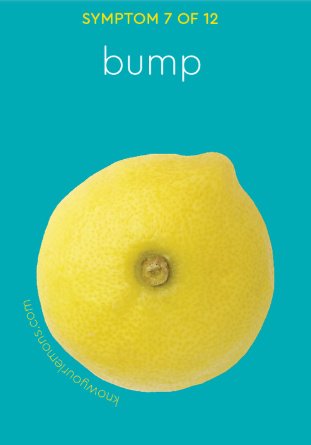
Sometimes a cancerous lump is on the surface of the breast. However, not all lumps and bumps are cancer. Many are cysts (fluid collections) or harmless, benign lumps made of various tissue (fibroadenomas). Many women have lumpy, bumpy breasts. However, if it’s something that concerns you, show a doctor. If other tests are inconclusive such as a mammogram or an ultrasound, looking at the cells from the lump under a microscope with a biopsy can help to determine if it’s cancer.
8. Sunken Nipple
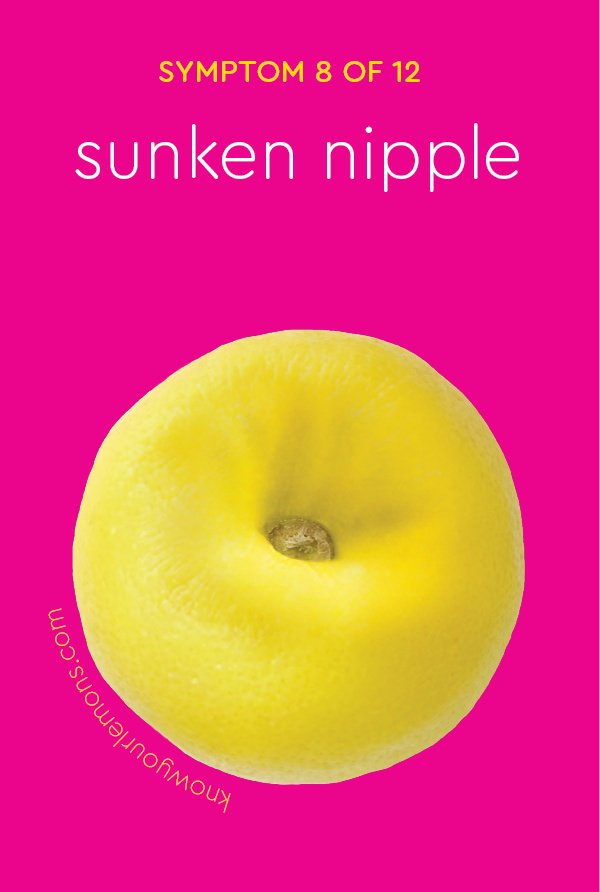
Retracted nipples can be a normal shape of the breast (from when they were first developed). However, if you notice your nipple changing and flattening or turning inwards, it could be a sign of a new breast cancer tumor underneath, pulling the nipple toward it as it grows.
9. Growing Veins
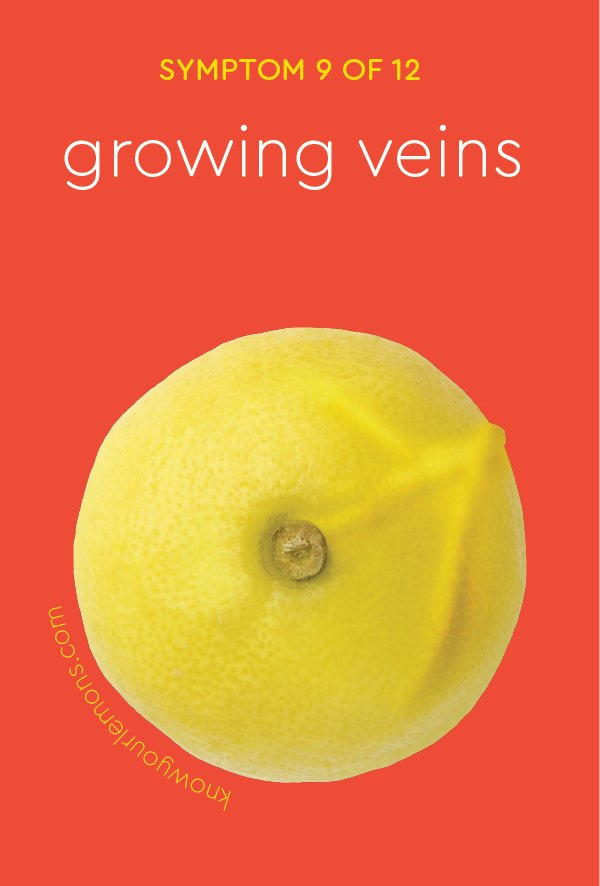
This is a rare symptom. Newly appearing blood vessels or veins are usually not a sign of cancer. More often it is connected to weight gain, breastfeeding or Mondor’s disease. However, if veins become more pronounced on the skin outside of these changes, on the breast or near the collarbone (and sometimes accompanied with a swollen arm) this could be a sign of a breast cancer tumor near the surface of the skin drawing more blood to itself and the vein swelling in size to accommodate additional blood flow.
Note: “Enlarged veins” is one of the lesser described symptoms of breast cancer and is usually included in general “other unusual changes” or “skin changes” categories. Yet enlarged veins can indicate a blockage in a blood vessel, that can be caused by a lump or increased supply of blood to the breast due to tumor growth.
10. New Shape or Size
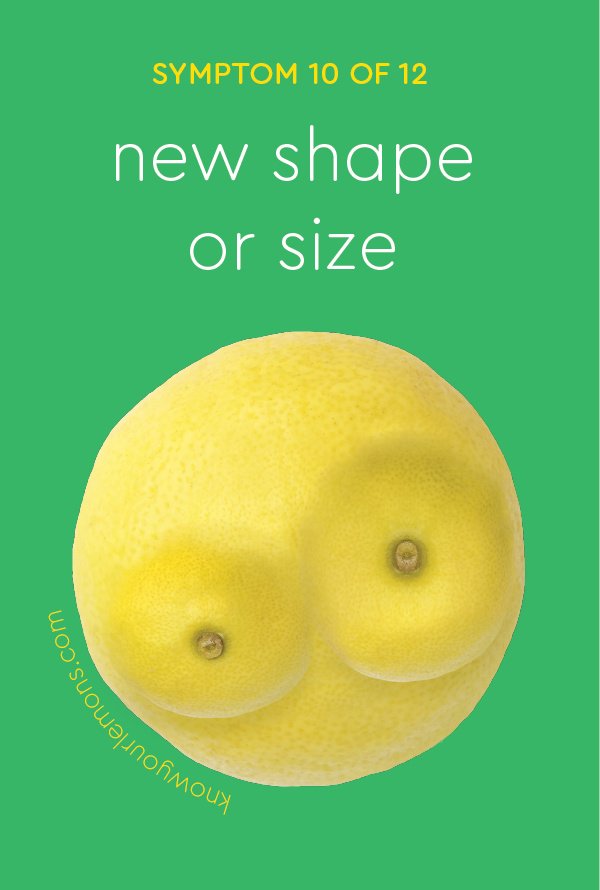
It’s common for one breast to be different in size and shape from the other. This kind of variety is what our bodies are known for. Breastfeeding can also cause changes in size or shape as a result of milk production. But if one breast changes size, flattens, swells, or droops unexpectedly—and doesn’t seem to be connected to your menstruation cycle—this could be a sign of breast cancer.
11. Orange Peel Skin
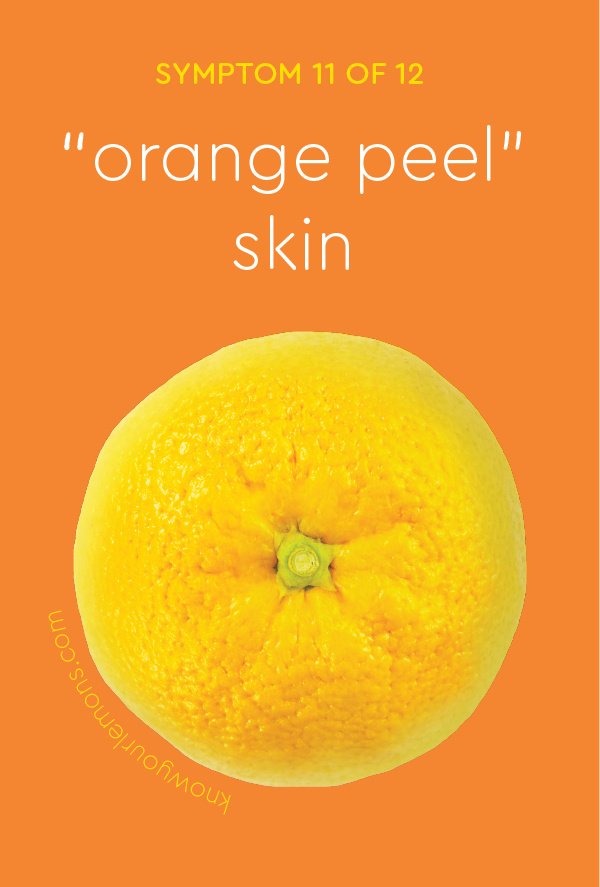
When the skin of the breast looks like the dimpled skin of an orange, this is a symptom of breast cancer known as “peau d’orange,” (how the French say “orange peel”). With peau d’orange, the breast swells to the point it causes hair follicles to look like lots of little dimples. The skin may or may not change color.
Peau d’orange is a sign of Inflammatory Breast Cancer. This type of cancer blocks the flow of lymph in the breast, which causes swelling and redness, but without an obvious hard lump.
12. Hard Lump
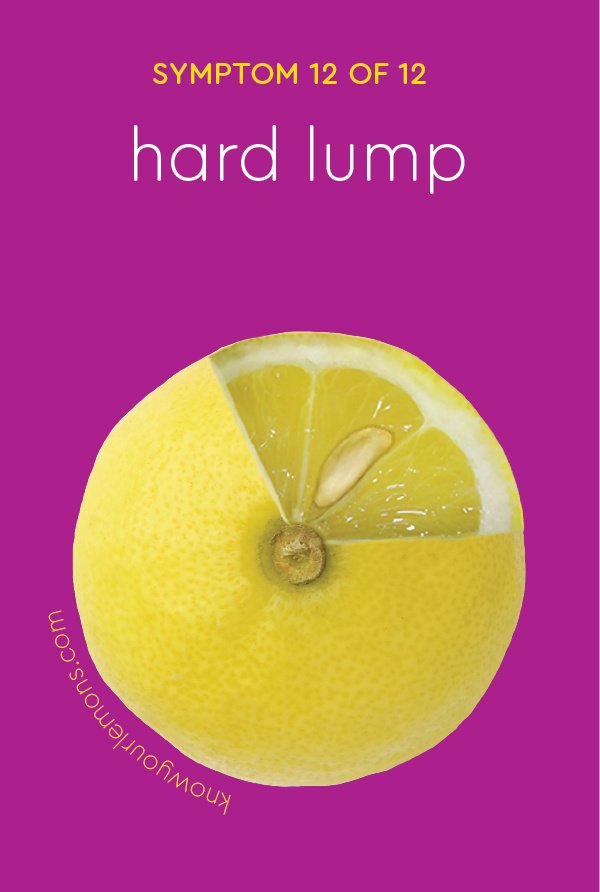
The most common sign of breast cancer is a lump deep in the breast. It often feels immovable and hard, like a lemon seed. It can be any shape or size. A lump is not always easy to feel. If you have access to breast cancer screening, use it—a mammogram can detect a lump long before it can be felt.
Most lumps turn out to be harmless, such as a fluid filled cyst or a fibroadenoma. But if you notice a hard lump that doesn’t come and go with your menstrual cycle, don’t ignore it. The sooner breast cancer is found, the more treatable it can be.
Recognise something? Don’t panic, some changes are normal. But if it stays around, be smart- show a doctor.
Download the ‘Know Your Lemons’ app for more info.


